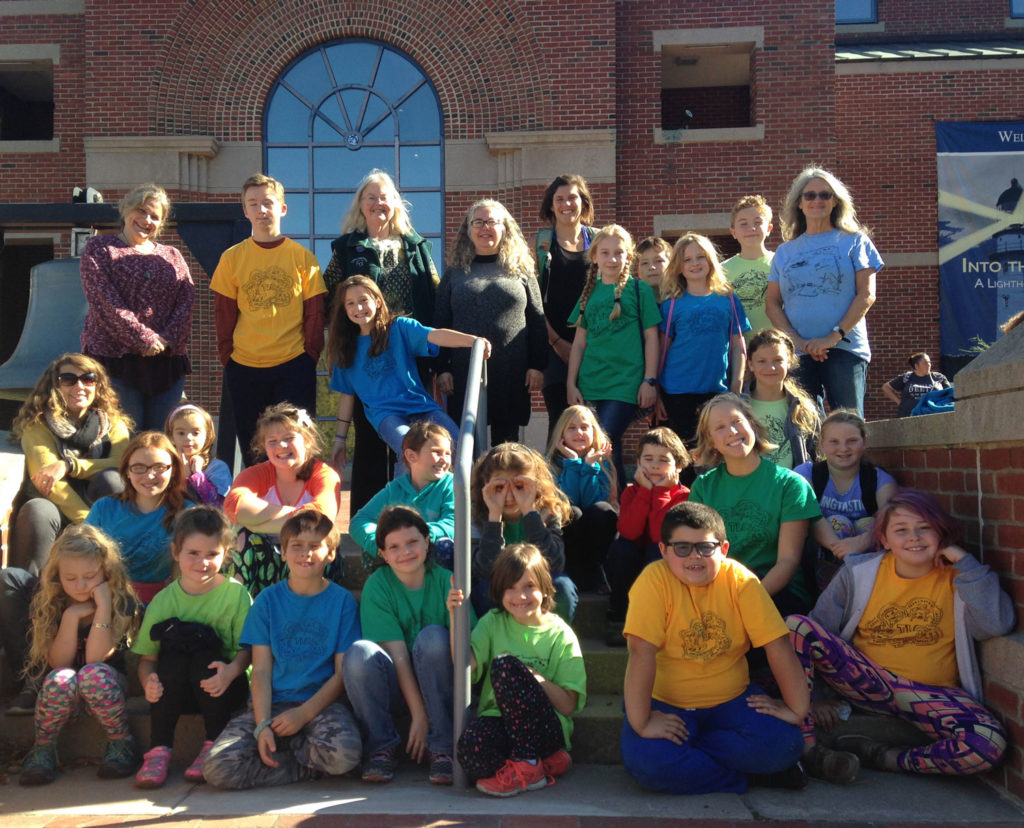Before the start of the new school year, way back in August, the teachers from the Outer Islands Teaching & Learning Collaborative (TLC) gathered in Rockland for their (now) annual Teacher Retreat.

Planning for the year ahead during the annual TLC Teacher Retreat in August
The focus of the retreat is to allow work time and planning for the year ahead – academic and social experiences for students, and professional development and support for teachers. What became the driving focus for the day, though, was not the “what” or “how” of our work (dates for bi-weekly teacher meetings, virtual Student Council, book groups, seasonal parties), but the “why.” We were spurred in this direction after watching a clip from Simon Sinek’s TED Talk on the “Golden Circle.” By taking time to clarify and (re-)define the “why,” the purpose for our work this year, all the other components more or less fell into place.
So what was our “why”? The center of our Golden Circle?
Social Learning.
Ubiquitously, teachers identified and reinforced the need for students to have a consistent peer group. Yes, students from the TLC schools (Cliff Island, Cranberry Isles, Frenchboro, Isle au Haut, Matinicus, and Monhegan) have classmates in their own schools, but they may not necessarily have peers; students their own age for whom to create a learning environment that generates academic accountability and motivates continued growth and buy-in to the curriculum. Peers to model and imitate in social interactions and foster relationships with.
Queue the TLC.
From the “why” we created the “what” and “how.” Much of that was directed at the big ticket item of the fall: our multi-day, off island field trip. To the outside eye, our field trips may look like a good excuse to get off island (and do mainland grocery shopping) and spend a couple days in a tornado of chaos and fun and over-stimulation. Take a peek for yourself:



Even though it looks like a lot of fun, it’s really more calculated and tactful than that. Formulating the agendas for these trips is about creating a structure and an environment that allows social learning to take place – integrating behavioral and cognitive learning. Making and holding space for students to interact with peers in their age cohort while utilizing local educational resources. Yes, from the external eye you may see the tornado of mayhem, but there’s a method to the madness.
The benefits from these field trips – friendships, social and emotional growth, confidence – help students gain the tools to engage with and participate in their world, be that on or off island. So where you may see the tornado of mayhem, I see students gaining confidence and preparing to succeed in the life ahead of them.
Is it fun? Yes!
Is it hard? YES!!
But it’s the “why” of what we do. The center of our Golden Circle. The eye of the the storm, where there is calm and clarity. And so, it is also easy.
*Sources on social theory:
- Bandura, A. (1977). Social Learning Theory. Englewood Cliffs, NJ: Prentice Hall.
- Sautter, Elizabeth. (2014). Making Social Learning Stick! AAPC Publishing.


